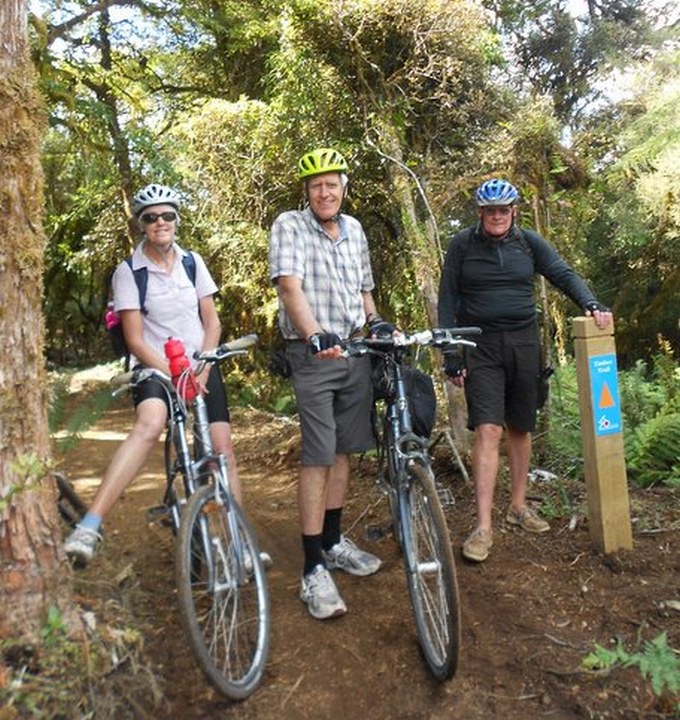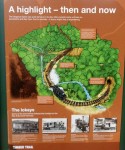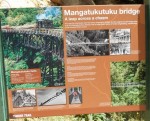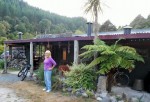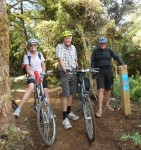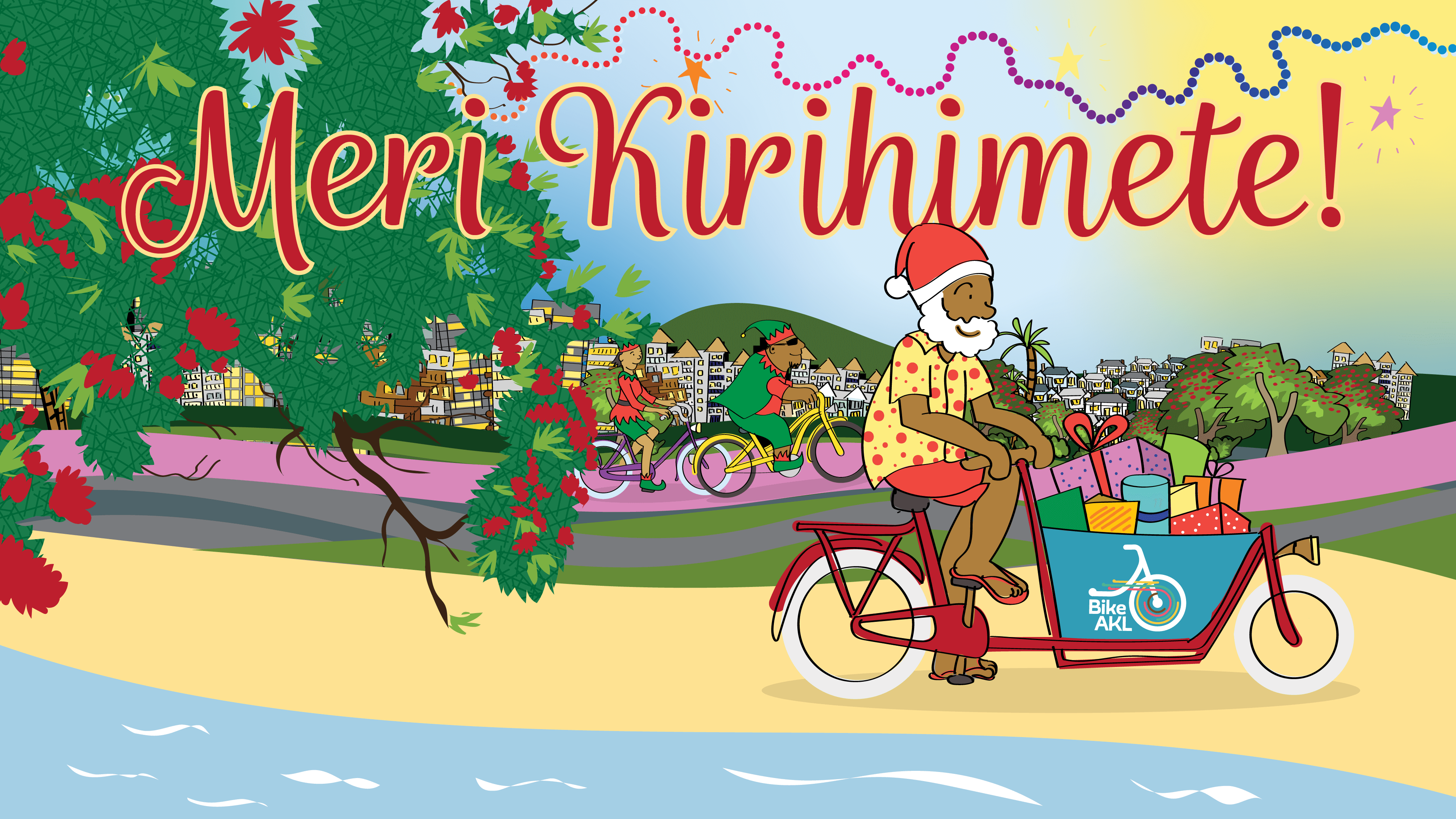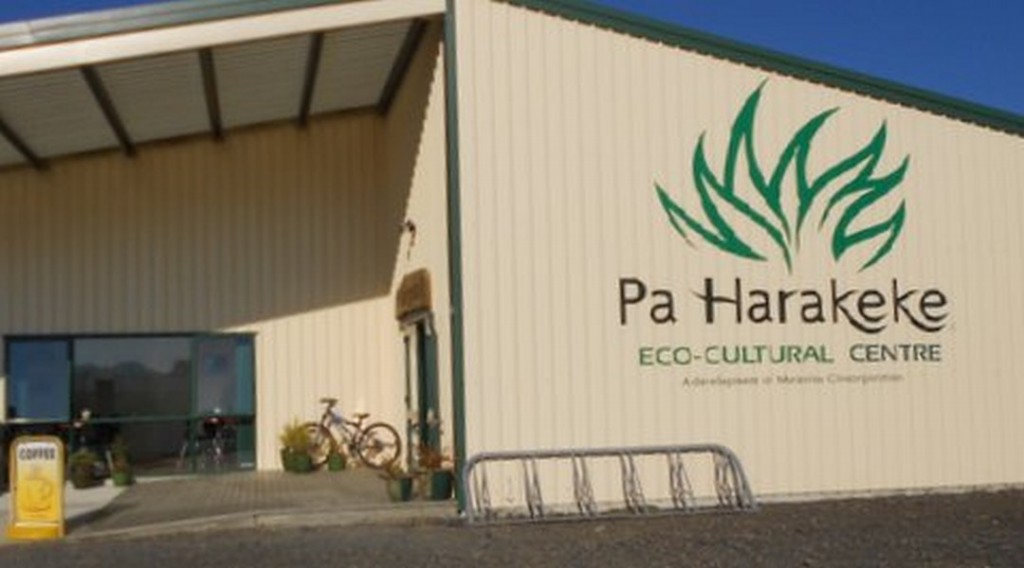 I’m prepared for flak for putting my opinion out there on one of the newest National Cycle Trails – especially as I haven’t ridden the South Island’s Alps to the Sea yet (I hear it’s wonderful).
I’m prepared for flak for putting my opinion out there on one of the newest National Cycle Trails – especially as I haven’t ridden the South Island’s Alps to the Sea yet (I hear it’s wonderful).
But as far as the North Island goes, the Timber Trail in the King Country has it all – vast panoramic views; well constructed, interesting tracks; virgin native forest; constantly changing landscapes; massive high long swing bridges, (which made us gasp in wonder as each one came into view); historic tram routes and early logging settlements with great story boards to tell their tale; lovely downhill runs, one serious long uphill and good gradients for the rest of the time.
On top of this, the accomodation places are genuinely unique and provide comfortable and generous hospitality. We were on a high on this trip, as the experience was truly inspirational.
We set off from Auckland late on a recent Saturday afternoon with our bikes on board, heading for Benneydale. The village is tiny, just a shop, a pub, a school a couple of community halls and a scattering of houses which have seen better days. It was formerly the centre of a busy native logging industry in Pureora Forest, which was stopped after Stephen King’s famous tree sitting protest. Despite this, there is a quirky charm and evidence of a strong sense of community to the village, shown by the residents pulling together to create big cut-outs of rugby players which decorated the village during the Rugby World Cup.
Our accomodation in the 2 bedroom cottage at the Art Doc Gallery is not to be missed, as our hosts are truly remarkable. Who would expect to find a highly cultured couple, with former careers as a French diplomat and a manager of hotels on the French Riviera in Benneydale? They are both charming and fascinating. Equally intriguing is their gallery and dining room with a vast library of vinyl LPs. An added surprise and delight was Monica’s expertise as a professional singer. She generously gave us an impromptu concert which ended with our joining her in a singalong.
On Sunday morning we set off for the short drive to leave our car at the Pureora DoC Centre, stopping enroute for coffee and a tour of the newly completed Pa Harekeke cultural centre. It is an impressive initiative by local iwi, and includes bike friendly features such as a bike trail, hire bikes and hosting cycling events.
We entered the Timber Trail beside the DoC Centre, and were overawed by superb quality of the path winding through huge virgin native trees, adorned with moss and creepers. It felt like a scene from Lord of the Rings. We were also impressed by the design and visibility of the track markers placed at regular 1 km spacings, (which counted down the distance from the start of the Trail) and at every small diversion along the way. They were be far the best we have met on any of the new Cycle Trails.
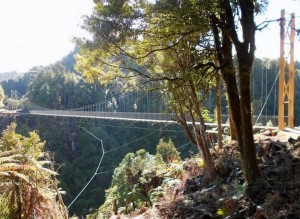 Within an hour we had emerged from the dense forest onto the lower slopes of Mt Pureora, which gave wide outlook over the northern section of the forest and farming hinterland. By lunchtime we were at another outlook, this time over the first of the stunning swing bridges for which the Trail will become famous. Late afternoon brought us to the turn-off to the Black Fern Lodge, for our overnight stay.
Within an hour we had emerged from the dense forest onto the lower slopes of Mt Pureora, which gave wide outlook over the northern section of the forest and farming hinterland. By lunchtime we were at another outlook, this time over the first of the stunning swing bridges for which the Trail will become famous. Late afternoon brought us to the turn-off to the Black Fern Lodge, for our overnight stay.
Kerry and Maria who have built the Lodge and back-packers accomodation in The Forge have a farming background, but have skilfully created charming and very comfortable facilities . They have been catering for families, corporate visitors and others wanting a relaxed retreat in the midst of nature, and confessed to being amazed by the tidal wave of cyclists who are now coming their way. We are happy to report they have quickly adjusted. The meal provided by Maria shows she understands the keen appetite of cyclists and love of good home cooking.
We returned to the trail next morning in time to come across the DoC project manager and bulldozer driver who have been instrumental in creating this cycling wonder. It was great to have someone to tell us how they had built the huge swing bridges and were amazed by the high degree of kiwi ingenuity and skilled helicopter manoeuvres. We left them to ride onto the last of the bridges, climb a seriously long uphill section, and then onto the last highlight of the Trail, the mostly downhill section along the historic tram track route.
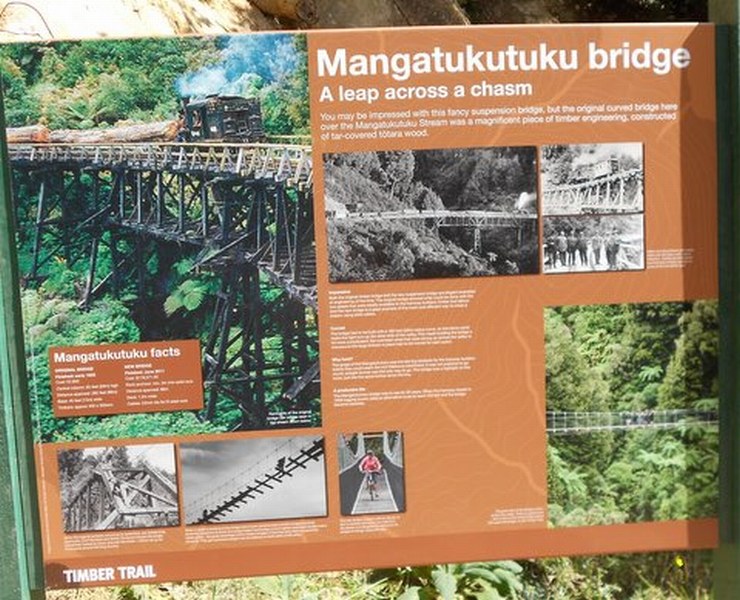 Dating from the 1920s to service the growing native logging operation, the tram route has been restored for cycling. Its perfect gradients for riding are easy to take for granted, until you realise they are achieved by numerous cuttings.Ferns and other native plants on the sides of the cuttings create lush, soft green corridors. Superb interpretation panels evoke the history of logging and respect for the women and men who had to deal with the harsh winter climate and isolation to work in the forest and establish small settlements along the route.
Dating from the 1920s to service the growing native logging operation, the tram route has been restored for cycling. Its perfect gradients for riding are easy to take for granted, until you realise they are achieved by numerous cuttings.Ferns and other native plants on the sides of the cuttings create lush, soft green corridors. Superb interpretation panels evoke the history of logging and respect for the women and men who had to deal with the harsh winter climate and isolation to work in the forest and establish small settlements along the route.
We arrived at the tiny village of Ongarue, ( the end of the Trail) to be met by the shuttle we’d booked to take us back to Pureora. Before leaving we met a group of young people on the tools, working to convert one of the character villas on the short mainstreet into a backpackers, and a second villa next door, into a cafe. They reported that many cyclists are coming off the Trail, and were excited to see its economic power in action, bringing investment to restore local buildings and the vitality of the village.
We love the fact that the Timber Trail has provided the incentive to recover and reveal the rich heritage of the Pureora Forest and surrounding district. It’s cycle touring at its best. We recommend you get there to experience the benefits, delights and awesome fun of our newest National Cycle Trail.

